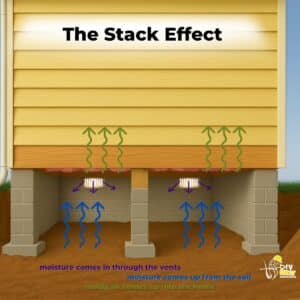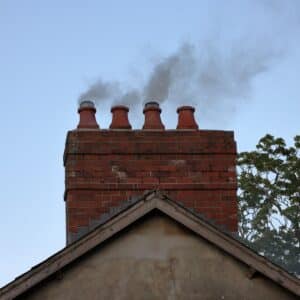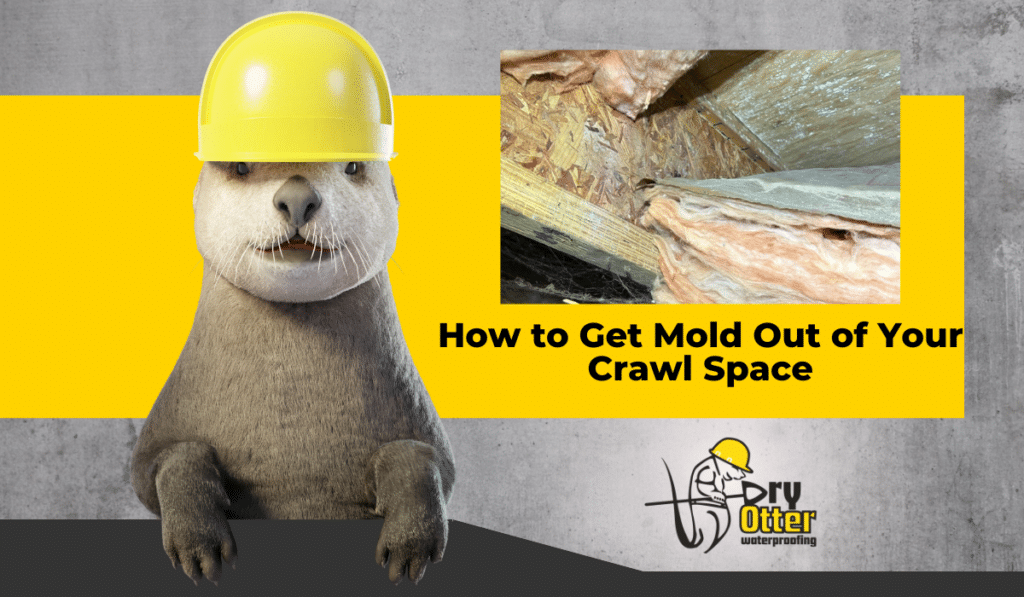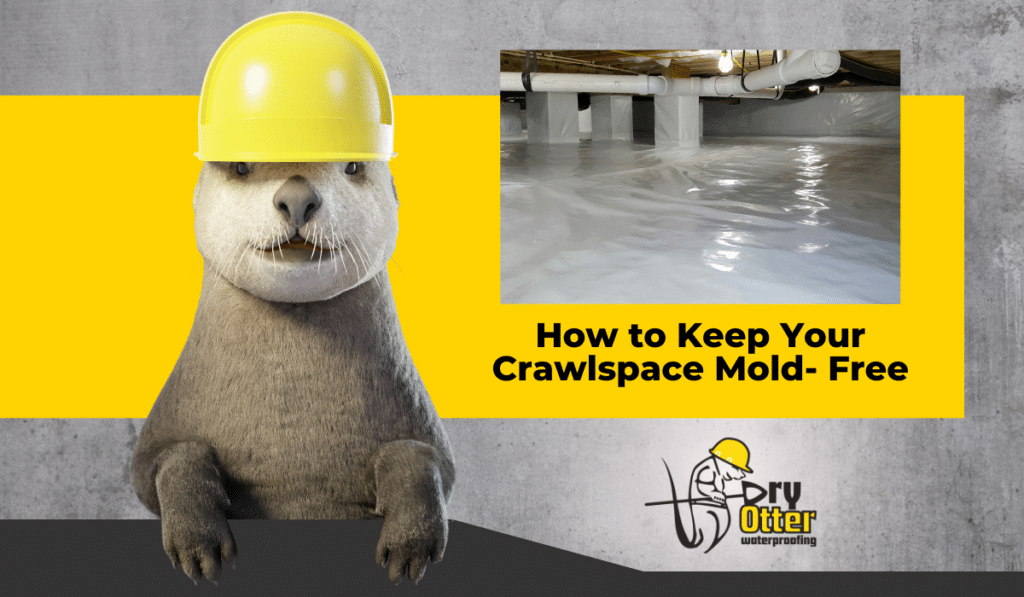The stack effect, sometimes called the chimney effect, is a natural phenomenon in buildings where warm air rises and escapes through upper levels while cooler air enters through lower areas. This airflow pattern has significant implications for energy efficiency, air quality, and moisture control, particularly in homes with basements or crawl spaces.
What Is the Stack Effect?
The stack effect occurs because warm air is less dense than cold air. When indoor air is warmer than outdoor air, it rises and escapes through any available openings near the top of the structure, such as attic vents or leaks in the building envelope. As this air exits, it creates a slight vacuum at the lower levels of the house. Cooler outside air is drawn into the building to replace it, often through gaps in the foundation, crawl space vents, or basement cracks.
This movement is driven by thermal buoyancy and is affected by the height of the structure and the difference in temperature between the inside and outside. The greater the vertical distance between the intake and exhaust points, and the greater the temperature differential, the stronger the stack effect.
This process is explained in detail by the Department of Energy’s Building America Program, which describes it as one of the primary forces driving air leakage in buildings (Building America Solution Center, Pacific Northwest National Laboratory, 2023).

Why Is It Called the “Stack” Effect?
The term “stack effect” is borrowed from chimney design. In a chimney, hot combustion gases rise due to the same physical principle, warmer air being lighter than the cooler surrounding air. The taller the chimney and the greater the difference in temperature between the flue gases and the outside air, the stronger the upward draft.
In buildings, this same principle creates a vertical airflow that moves air, moisture, and pollutants from lower areas to upper floors. This phenomenon is also used in industrial and mining applications, where vertical shafts are designed to ventilate using buoyant air movement. (Wikipedia: Stack Effect)
Where Else Do We See the Stack Effect?
The stack effect is most noticeable in taller buildings where the vertical distance between floors increases pressure differentials. For example, in high-rise structures, pressure differences caused by the stack effect can reach several Pascals per floor during cold weather, creating strong air movement that impacts indoor comfort and ventilation.
It also appears in:
- Chimneys and flues
- Underground mines
- Vertical ventilation shafts in large buildings
The United States Department of Energy notes that stack-driven airflow is a significant contributor to energy losses and indoor air challenges, especially in leaky or poorly sealed buildings.

How the Stack Effect Affects Homes
In residential structures, the stack effect can pull unconditioned, moisture-laden, or polluted air into the living space. This is particularly problematic in homes with vented crawl spaces or damp basements.
Cool, damp air entering from the crawl space can carry mold spores, allergens, or musty odors into the home. As this air is warmed while moving upward, its ability to hold moisture increases, raising the relative humidity on the upper floors. This can lead to condensation, mold growth, and general discomfort.
These concepts are detailed in the U.S. Department of Energy’s resources on airflow, which emphasize the connection between air leakage, moisture problems, and poor energy performance.

Impacts on Energy and Indoor Air Quality
The stack effect affects more than just moisture. It can create drafty conditions on lower levels and make upper floors feel too warm or stuffy. As air escapes through the top of the house, heating and cooling systems must work harder to maintain consistent temperatures, increasing energy costs.
In winter, this effect draws cold outdoor air into the lower part of the building. In summer, the reverse stack effect may occur, where warmer outside air is drawn downward into cooler indoor spaces. Both patterns lead to inefficiencies in climate control and may worsen existing issues with indoor air pollutants.
The National Institute of Standards and Technology (NIST) has studied airflow patterns and identified stack effect as a key factor in heat loss and air quality variations across building zones.
How to Mitigate the Stack Effect in Your Home
To reduce the effects of the stack effect, building science experts recommend a combination of sealing, insulating, and moisture management strategies.
- Air Sealing
- Seal gaps at rim joists, plumbing penetrations, electrical openings, and HVAC chases. This limits uncontrolled airflow between floors.
- Crawl Space Encapsulation
- Installing a vapor barrier and sealing crawl space vents prevents moist, cool air from entering and rising into the living space.
- Improved Insulation
- Attic and crawl space insulation reduces temperature differentials, decreasing the driving force behind the stack effect.
- Drainage and Foundation Maintenance
- Managing water at the foundation level prevents moisture from entering the air at the source. Saturated soil around your foundation can introduce water vapor into the air that the stack effect then distributes throughout the home.

Related Reading: Saturated Soil and Foundation Moisture
Much of the moisture that enters the home via the stack effect originates from the soil surrounding the foundation. When this soil becomes waterlogged, it contributes to poor indoor air quality and humidity issues. For more information on this process, see our related post, What Is Backfill Saturation?
Conclusion
The stack effect is a natural process that plays a major role in how air, moisture, and pollutants move through a building. Though it is driven by basic physics, the consequences can be significant, ranging from higher energy bills to damp indoor conditions and long-term air quality concerns.
Understanding how the stack effect works, where it originates, and how to manage it through sealing, insulation, and moisture control is essential for creating a healthier, more efficient home.






